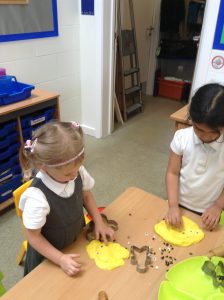Art and Design Curriculum Overview
Art and design remains a firm favourite for our children. At Savile Park, children are given opportunities to explore their ideas by experimenting, inventing and creating their own varied works of art that have a purpose using a range of materials. Design elements allows us to use our creative and scientific mind to produce pieces of art. We learn through experimenting, designing, drawing and testing to make fantastic working end products.
At Savile Park we have recently begun to follow the Kapow scheme which has given us the chance to revitalise the art curriculum. We offer our children a wide range of opportunities to work with a range of medias and materials in order to create some truly wonderful creations. Starting from Reception, children begin to develop the four elements of art and design which is worked upon and deepened as the children move through the school.
The four elements of art and design are:
- Drawing
- Painting and mixed media
- Sculpture and 3D
- Craft and design
All classes are given an artist to study each year which ensures children understand and learn about a mix of prominent artists with consideration to race, gender, cultural and social coverage.
Early Years Foundation Stage

Giving children opportunities to be imaginative, explore different materials and develop their ideas is an important part of the Early Years Foundation Stage, mainly within the ‘expressive art and design’ area of learning. Children are encouraged to practise their handling, moving and control skills (for example, by painting or using Play doh). Materials are accessible for children to develop and explore their ideas and to be imaginative.
Key Stage One

Pupils are given opportunities to use a range of materials creatively to design and make products through drawing, painting and sculpture. They explore different techniques in using colour, pattern, texture, line, shape, form and space.
Another important aspect of the art and design curriculum is learning about the work of a range of artists, craft makers and designers, describing the differences and similarities between different practices and disciplines, and making links to their own work.
Key Stage Two

Builds on what children have learned in Key Stage 1. Children develop and improve their skills in drawing, painting and sculpture using a range of different materials. They are expected to create sketch books to record their learning and to use them to review and revisit ideas. They continue to learn about great artists, architects and designers in history.
Art is an integral part of our curriculum and underpins much of our cross curriculum.
The children’s art work is displayed prominently within the school and we seek out opportunities, within the local community to exhibit our children’s art. We aim to allow children as many opportunities as we can to visit local and national galleries and make full use of the local environment to foster an awareness and stimulate an eye for the art around us.
What do the children think about art?
Here are just a few quotes from our children to encapsulate what they enjoy about art in our school.
- ‘I can explore and experiment in my own way’
- ‘I want to be an Artist when I grow up and have my own gallery’
- ‘Art is great because you can create your own adventure on a page!‘
How can I support my child with art?
1. Get messy!
Try to get hold of as many different types of drawing and painting resources as you can to let your child get creative and explore creating art using different materials. Paints, chalk, crayons, pens, pencils, modelling clay and much more can be found in discount shops. Just don’t forget to put lots of newspaper down first!
2. Use household objects creatively
Alternatively, instead of buying materials, let them get creative using things around the house – for example, pasta and pulses to create pictures using glue.
3. Keep a sketch book
Encourage your child to keep a sketch book. Suggest that they take it with them when they go out so that they can look for things to sketch – a tree, a building, a scene. Alternatively, if they see something they would like to draw, take a photo on your phone and let them sketch from it when they are home.
4. Celebrate your child’s art
Praise your child’s creations and encourage them not to get disheartened if they feel they have made ‘mistakes’. Explain that art is about being creative and trying out different things. There is no right or wrong way to do things. You could even ‘frame’ their work using coloured paper or card and create a little gallery on the kitchen wall or in their bedroom to display their work.
5. Discuss and enjoy art together
Find out about local art galleries or museums that you can visit with your child. Encourage them to talk about what they see and to share their opinions – about subject matter, colours, what materials the artist used, and so on.


